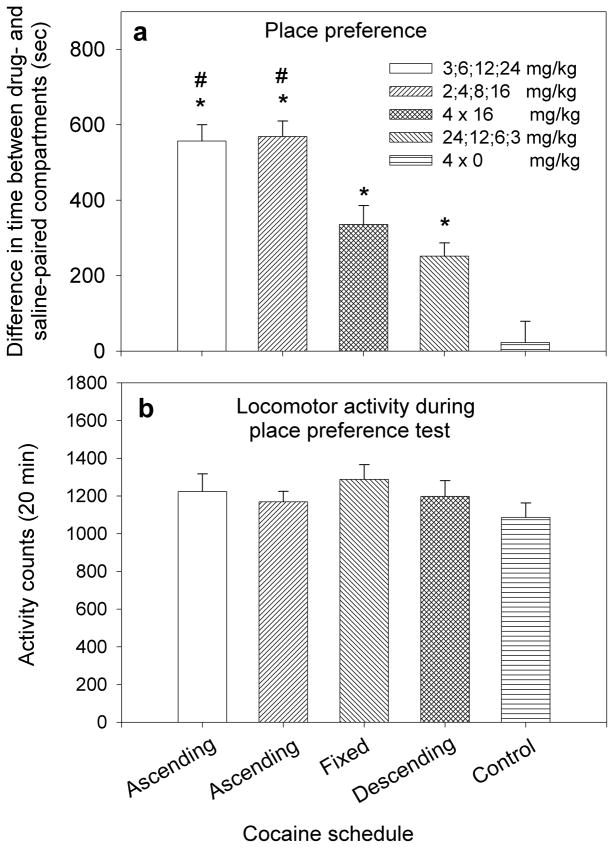Figure 1.
Influence of changes in the schedule of drug administration during the conditioning phase on cocaine-induced place preference and locomotor activity. a. Y axis in panel a shows the mean ± SEM difference in time spent in drug- and saline-paired compartments; this difference is considered as the magnitude of place preference. Mice conditioned by ascending doses of cocaine (3,6,12 and 24mg/kg or 2,4,8 and 16mg/kg) developed a higher magnitude of place preference compared to mice that had been conditioned by a fixed daily dose of cocaine (16mg/kg) or descending doses of cocaine (24,12,6 and 3mg/kg); #p<0.05. All cocaine-conditioned groups showed significant place preference for the drug-paired context compared to control group (4 × 0 mg/kg cocaine) *p<0.05. b. Y axis in panel b depicts the mean ±SEM activity counts recorded during the 20 min test session. No significant differences between the five groups were observed.

